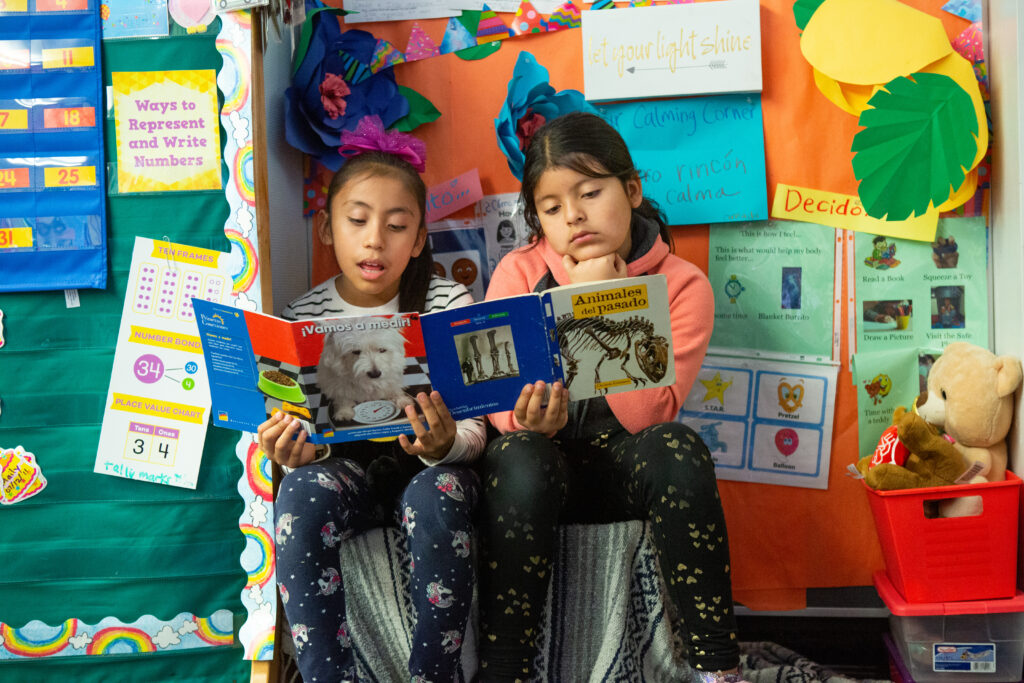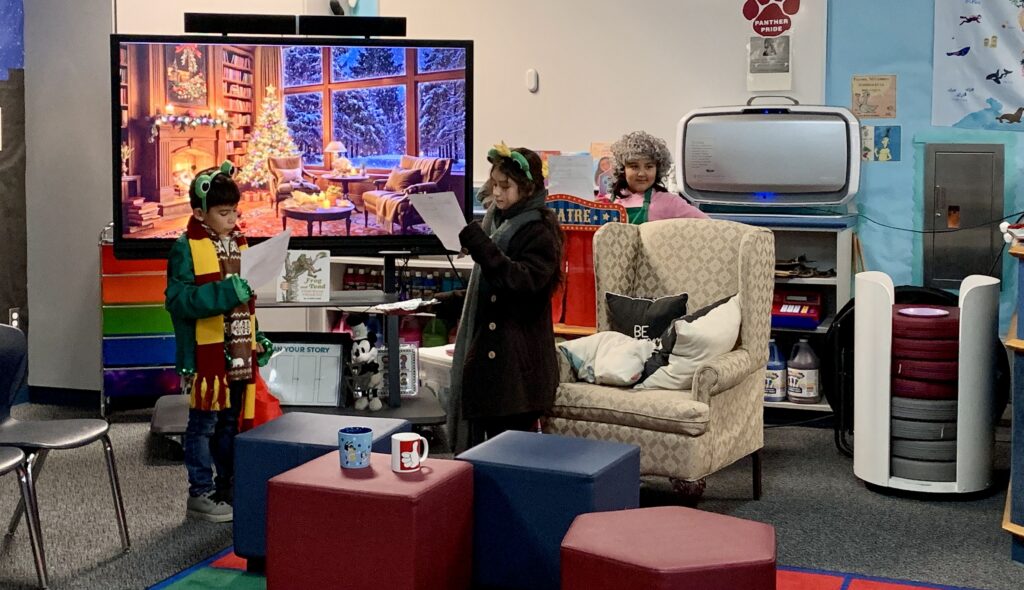
Two students in a combined second- and third-grade class read together.
Credit: Allison Shelley for American Education
After Emily Hanford’s “Sold a Story” podcast sent shockwaves through American public education by revealing how countless schools had been duped into teaching reading in a way that doesn’t actually work, Gov. Gavin Newsom was among those who stepped in.
With the encouragement of State Board of Education President Linda Darling-Hammond, he proposed a new $1 million “literacy road map” for school districts.
But despite its good intentions, the voluntary road map lacks teeth, since the state “imposes no requirements on districts regarding how to teach reading.” In other words, we have yet to see whether this much-talked-about national “reckoning” on reading will translate into meaningful changes in local policies and classroom practices in California.
Meanwhile, the most recent statewide test scores show that our literacy crisis persists: Less than half of fourth and eighth graders are proficient in reading. These results have not moved much in the past decade. The Los Angeles Times editorial board recently posed a powerful question for state education leaders: “We know how to turn students into better readers. Why doesn’t California do it?”
This month Families in Schools launched “Read LA! Literacy and Justice for All,” a campaign calling on California’s largest school district, Los Angeles Unified, to fully implement what’s known as the “science of reading” — a vast body of evidence-based research that shows us how kids actually learn to read and what effective literacy instruction requires. But education leaders and teachers are not the only ones responsible for ensuring every child learns to read.
Parents have a critical and multifaceted role to play.
Unfortunately, many parents are unclear about their children’s literacy development. One poll found that 92% of parents wrongly think their children are academically on track in reading (as well as math). For a forthcoming report on the California literacy crisis, we commissioned a poll (full results will be published soon) that found most parents have no idea what curriculum their child’s school uses. That poll also revealed that 1 in 3 parents are completely unfamiliar with the science of reading.
In our research, we also spoke at length with dozens of parents. We encountered a wide range of perspectives and experiences concerning their role in helping their children become literate.
Some parents don’t realize that literacy starts even before their children are old enough to hold a book. They aren’t aware of the abundance of research showing that by speaking to their infants, parents help them learn words and develop the neural patterns necessary for language comprehension. As their children grow, the research says, parents should engage in nurturing talk and interaction to help build their babies’ brains, which sets the foundation for all learning.
Of course, many parents we spoke with knew they had a crucial role to play in their children’s literacy and relished it. “Her face always lit up with excitement every time we read together, and she always had the book picked out for us, so I know she loved it as much as I did,” Sylvia Lopez told us, describing the countless hours she spent reading with her daughter.
However, economic and time constraints make it difficult for some parents to be as involved as they would like. “As a full-time working single mom, finding time to read with my son was sometimes a challenge,” Mary Lee said. When she was busy juggling work, dinner and other responsibilities, she got creative: “We often turned to rhyming stories that involved singing to make reading more enjoyable. This not only made reading fun but also boosted his recall abilities over time.”
Some confessed they didn’t know how best to help their children with literacy development — an issue that is perhaps more acute among parents for whom English is a second language.
“I have worked a lot on self-healing and personal development so I could provide better support to my son’s development, particularly in the context of literacy, which was a difficult process,” Hilda Avila told us. She sought help from a program in Los Angeles that supports bilingual parents and says it helped her “learn many techniques for supporting my son’s reading proficiency.”
While parents should do all they can to support their children at home, they also can’t ignore what’s happening at school or what their children’s reading scores tell them. When a child is floundering, parents often need to advocate.
Watching her child struggle with reading comprehension, Sonia Gonzalez was frustrated. “I thought that schools were experts at knowing how all students learn to read!” she told us. But Gonzales persisted, seeking out different programs at the school and monitoring the results. “Unfortunately, it took many years and attempts to figure out which reading programs were helpful to my child,” she said.
In the fight to ensure literacy for all kids, which many of us consider among the greatest civil rights efforts of our time, perhaps parents’ greatest asset is their collective strength. By coming together to demand that policymakers and educators make literacy instruction a top priority and adopt bold policy and practice changes that align to the science of reading, parents can help end California’s literacy crisis once and for all.
●●●
Yolie Flores is the CEO of Families in Schools, a nonprofit organization that works with low-income, immigrant, and communities of color to ensure families/caregivers can effectively advocate for their children’s education.
The opinions in this commentary are those of the author. If you would like to submit a commentary, please review our guidelines and contact us.





